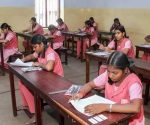US shifts focus to literacy, school choice, and state control in McMahon’s new education grant priorities – Times of India

In a major shift for US education policy, Secretary of Education Linda McMahon announced on May 20, 2025, her first set of proposed priorities for discretionary grants from the US Department of Education. The new priorities signal a departure from the previous administration’s focus and mark the fastest release of grant priorities by any education secretary in the first year of an administration.The three key areas outlined are evidence-based literacy, expanding education choice, and returning education control to the states. These priorities are expected to guide future competitive grants from the Department, influencing how billions of dollars in federal funding will be allocated to states, districts, and education providers.Focus on evidence-based literacyOne of the central pillars of Secretary McMahon’s priorities is evidence-based literacy. This initiative seeks to promote literacy instruction grounded in the science of reading. According to the Department, this includes proven instructional practices based on phonological awareness, phonic decoding, vocabulary development, fluency, and reading comprehension. The aim is to reverse declining reading scores across the country by emphasizing direct, systematic, and explicit instruction rooted in research.By prioritizing literacy methods that have demonstrated effectiveness, the Department hopes to ensure that students nationwide receive the foundational skills necessary for academic success. “It is critical that we immediately address this year’s dismal reading and math scores by getting back to the basics,” said McMahon.Expanding education choice optionsThe second priority announced is the expansion of education choice. This includes support for charter schools, open enrollment policies, and a broad array of alternative educational pathways. The Department’s framework offers a “menu” of options tailored to different grant programs, including education savings accounts (ESAs), home-based education, concurrent enrollment programs, postsecondary distance learning, apprenticeships, and tutoring.The goal is to empower families with more options and to encourage innovative school models that meet diverse student needs. McMahon emphasized that future grants will reward programs that increase access and flexibility for learners.Returning control to the statesThe third and most far-reaching priority is to return more educational authority to the states. This will enable state governments to play a larger role in implementing and managing education programs, especially where they are eligible grant applicants or can serve as endorsing entities. The Department sees this as a way to reduce federal administrative burdens and tailor education strategies to local needs.“This priority will have the broadest applicability across grant programs,” said the Department. It is intended to re-envision how federal education programs operate, ensuring that decisions are made closer to the communities they serve.Public comment period and next stepsSecretary McMahon’s Supplemental Priorities have been published in the Federal Register for a 30-day public comment period as of May 20, 2025. After reviewing and responding to public input, the Department will publish a Notice of Final Priorities (NFP) to finalize the changes.McMahon has indicated that additional priorities may be introduced later this year.
















